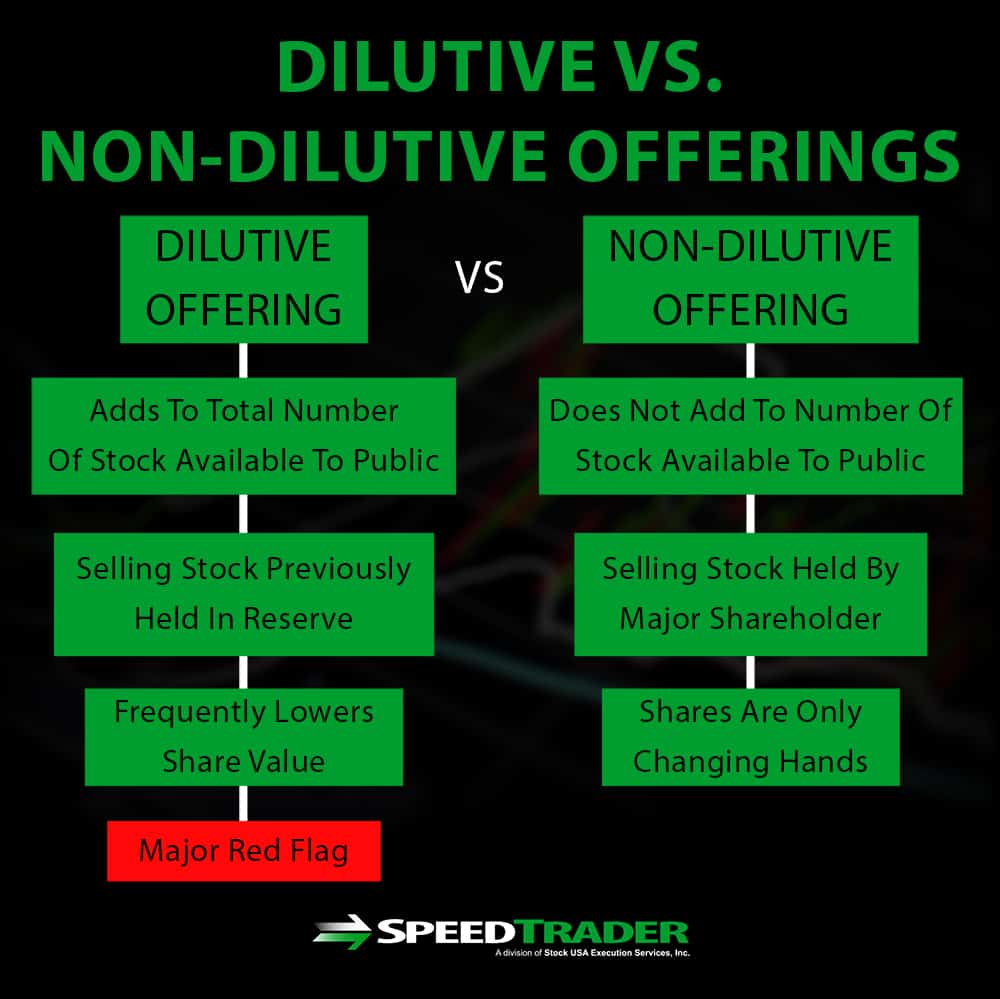
An offering occurs when a company makes a public sale of stocks, bonds, or another security. While the term offering is typically used in reference to initial public offerings (IPOs), companies can also make secondary offerings after their IPOs in order to raise additional capital. In general, secondary offerings are made to the public to raise money for acquisitions and corporate growth, although they can also be used to counter short-term cash-flow issues. Secondary offerings are important to traders because they can dramatically affect the price of a stock and present significant risks.
What is a Secondary Offering?
A secondary offering is any public sale of stocks, bonds, or another security that occurs after a company’s’ IPO. Typically, secondary offerings involve a company making some of its reserve of authorized shares available for sale to the public, in which case all funds raised go to the company. Alternatively, a secondary offering may involve major shareholders, such as a founder, CEO, or institutional investors, selling their shares to the public. In this case, money raised from the sale goes to the original shareholders. In many cases, secondary offerings involve the sale of shares from both the company and from major shareholders at the same time.

Why do Companies Make Secondary Offerings?
Secondary offerings are one of the most powerful tools that publicly traded companies and major investors have to raise money quickly. By selling shares that were previously held in reserve by the company’s treasury, companies can receive millions of dollars or more from public investors. This money can then be used to fund expansion projects, such as acquisitions or building corporate infrastructure in a new market. Alternatively, the funds from secondary offerings can be used to provide a rapid cash infusion in the face of liquidity issues, although buying shares during such a secondary offering is often highly risky. For individual shareholders, participating in a secondary offering can be a way to cash out on their investment or to receive cash for large personal purchases.

How do Companies File Secondary Offerings?
Secondary offerings must be filed with the SEC, which means that it’s relatively straightforward for investors to find out about them. Secondary offerings can be searched using the SEC’s EDGAR database, and the NASDAQ keeps an updated list of secondary offerings by companies trading on that exchange. Often, secondary offerings are also highlighted in stock news feeds through company press releases and offerings by major companies will receive significant financial news coverage.
What Traders Should Be Aware Of
Dilutive vs. Non-dilutive Offerings
The single most important thing to understand about any secondary offering is whether it is dilutive or non-dilutive – that is, whether the offering will add to the total number of stock available to the public. Secondary offerings that involve the company selling stock that had previously been held in reserve – also known as follow-on offerings – are generally dilutive since they increase the amount of stock that is held by the public. Secondary offerings that involve major shareholders selling their stock are typically non-dilutive since this stock had already been held and is just changing hands among investors. In this case, the company has not increased the amount of stock that is held by investors.
Distinguishing between dilutive and non-dilutive offerings is important because dilutive offerings frequently lower the share value of shares that had already been held by the public. As a company releases more stock to the public, the portion of the company that each outstanding stock represents is diluted. Thus, investors who purchased stock during an IPO will own fractionally less of the company following a dilutive secondary offering.
For this reason, secondary offerings are often a major red flag for existing investors. Often, stock prices will decline as soon as a dilutive secondary offering is announced to account for the soon-to-be lower inherent value of each outstanding share.
In a non-dilutive offering, this is not the case. Since shares are only changing hands and no new shares are made available, the proportional value of a single publicly held share does not change.

Offering Price and Size
In a non-dilutive offering in which shares are offered at current market value, there should theoretically be no effect on stock price. However, in a dilutive offering, the share price that a secondary offering is made at has a significant effect on the price of existing shares.
The least disruptive scenario is when a company offers the new shares at a value that accounts for the current market value minus a discount for the expected dilution effect. However, if a company offers shares at a further discount, it can sharply drive down the price of a stock as buyers will refuse to pay more than the price of the secondary offering until after the offering is made. Even after the offering is executed, the price of the stock will be lower than dilution can account for since traders who bought during the offering can sell at below the pre-offering market price and still make a profit.
The size of the offering – that is, the number of shares being offered – amplifies these effects. If the offering is small relative to the number of outstanding shares, the dilution and the effect of discounted pricing will similarly be small. On the other hand, if the offering is large, the price dilution effect will be significant and any discount in the offering price can have a significant effect on market value.
Offering Restrictions
While most secondary offerings do not come with restrictions, it is important for investors to verify whether any restrictions exist around a secondary offering. For example, a secondary offering could carry a lock-up period, during which time purchased shares cannot be sold, similar to those that typically follow an IPO.
Timing
Traders should be cautious when trading around secondary offerings, which means it is important for short- and medium-term traders to anticipate when a secondary offering might be announced.
The most common time for secondary offerings is immediately after the end of the lock-up period following an IPO. At this time, many insiders will sell shares in a non-dilutive secondary offering. Secondary offerings are also common when a company with a history of underperformance sees a price breakout on high volume. In this case, the company may make a dilutive offering to raise money or major shareholders may make an offering to reduce their holdings in the company. Beyond these occasions, the best way to predict secondary offerings is to check on a company’s track record of making secondary offerings and to understand the conditions around those offerings.

Conclusion
Secondary offerings can be a chance for companies and major shareholders to cash out of their investments, but they can represent a significant hazard for individual traders. Non-dilutive secondary offerings may theoretically not affect stock price, they can still sour investor sentiment on a stock and drive prices down. Meanwhile, dilutive secondary offerings almost always drive down the price of a stock because they decrease the value of each individual share.
Traders should be wary of secondary offerings and the risks they pose. When possible, predict when a company will make a secondary offering and avoid buying stock ahead of these periods.